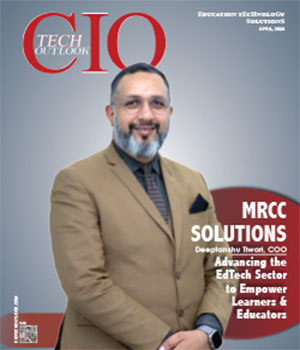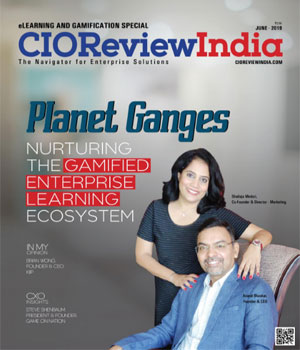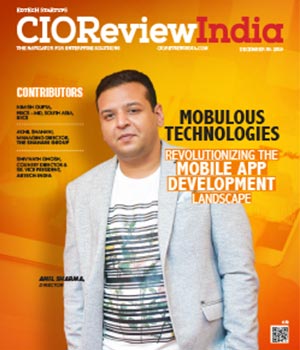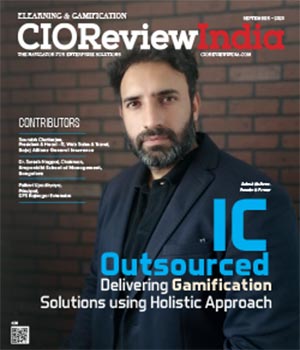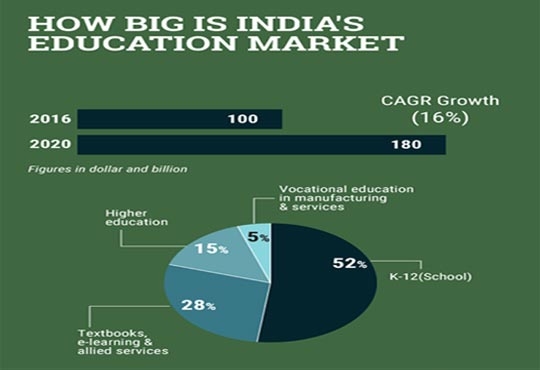
The Models Used For Procurement Organization
cioreviewindia Team | Tuesday, 30 March 2021, 04:46 IST
 There has been lots of talk lately around why it is the case that initiatives for centralized procurement claim to deliver huge savings but never actually materialize in the end. One reason may be due to the fact that you speak to anyone within the industry and they will have a different perspective on the meaning of what centralised procurement is and means. In order to try and clarify this the below article has been developed to set out the 5 different models for procurement organisation.
There has been lots of talk lately around why it is the case that initiatives for centralized procurement claim to deliver huge savings but never actually materialize in the end. One reason may be due to the fact that you speak to anyone within the industry and they will have a different perspective on the meaning of what centralised procurement is and means. In order to try and clarify this the below article has been developed to set out the 5 different models for procurement organisation.
What Is Procurement?
For the purpose of this article, it is important to define exactly what procurement is and how it is different to purchasing.
In some organisations, these two words are used interchangeably and hold the same meaning, whilst others use the word procurement with the deliberate purpose of meaning something very different. Whilst many organisations are agreed on what qualifies as purchasing, again there are different perspectives on the meaning of the word ‘procurement’.
For instance, the Oxford English Dictionary has it as ‘to obtain especially with care or effort’ and ‘obtain in exchange for payment’.
However, in the private sector industry, the word ‘procurement’ is representative of effort and care in upstream activities, such as negotiating, sourcing, and strategy, through to the execution of contracts. Some things that are considered within the scope of procurement include managing day to day supplies, managing contracts, placing orders, and payment processing, although they are usually included in with purchasing. It is clear to see then that the exact division of these responsibilities vary from organisation to organisation and even between departments within organisations.
The Three Most Basic Models
In the world of procurement there are three very basic models, with any others that are touted purely being a combination of these.
- Networked - any activity performed is coordinated right across all local units and all decision making is controlled, rather than being independent, by a node on the network.
- Central - all procurement and decision making activity is performed centrally. However, there may be some of this done at a local level that fall outside of the scope of procurement, i. e. cancelling supply via a contract that has been negotiated centrally.
- Local - here all control, decision making, and other activity is performed at a local level and completely autonomously.
There are very few large sized business or procurement company that are situated across multiple different sites and operate a procurement model that is either completely decentralised or centralised.
Two More Models
As well as the three different models as listed above, there are two other models that can be considered in addition to them. These are…
- Centrally Led Network - all activity is coordinated by units that are local and all control is performed by a number of nodes that are on the network, with the centre operating as the main node.
- Federal - this consists of a combination of both localised and centralised models. Some areas are controlled at a more central level, whereas others are controlled at a local level. The use of the word ‘federal’ does imply a certain level of governance centrally. The level of autonomy locally is determined by either a mandate or a mutual agreement which comes from the centre.
When looking at other models, the presence of a centre imposed mandate may have a certain bearing. For instance, having a federal model in place implies that central governance is in place and is supported by a mandate. However, a similar model could be in place that fully utilizes expertise and facilities that have been provided centrally. Equally, a network that is centrally led could also be mandated or businesses could join out of their own choice. In this way, these two models could easily become four.
There is finally the option of a model that is full hybrid. For instance, with some big conglomerates it can be a good idea for them to have an approach that is network based in just one division, whilst having an approach that is more federal in another, local in another, and with a varying degree of responsibility from the centre.
Finding The Right Model
The idea of considering and looking at additional models does not add much to the debate about choosing the correct type of model. Although the idea of a mandate is an issue that is substantive, it is a good idea to consider it within the scope of a responsibility assignment (RACI) matrix for procurement purposes. This comes full circle back to the various definitions that people have on what procurement is. In the most part, the biggest aim is to ensure that the ability and responsibility for procurement is laid with the right people within a business, company, or organisation.
Where more complex procurement is involved and for managing contracts that involve a continuing supply or services and / or goods, it is highly important to hold a certain level of engagement with important stakeholders in order to be able to leverage the expertise that they have. Therefore, the perfect model is directly influenced by the way in which business has to be conducted. This is in stark contrast to the much used approach of creating a model that dictates the way that business will be done. By using a RACI model for every and each category procurement, it is actually possible to clearly set out where the boundaries lay for the responsibility of procurement and the specific way in which procurement, along with certain stakeholders, engage with one another throughout the entire supply chain.
There are very few organisations that are able to operate without some sort of explicit organisation structure firmly in place. This is why it is necessary to make a choice. There are a wide variety of analytical tools available to these organisations to help aid their choice. Similarly, it is also important for them to decide if a mandate is something that they feel they want to or need to use - this is not something that should be rushed into.
CIO Viewpoint
Cloud Enabled Edtech Spaces Enriching Learning...
By CIOTechOutlook Team
Challenges and Issues of Online classes
By R. Chandran, Chief Information Officer, Bahwan Cybertek
Educational Technology, Digital Learning In The...
By Swati Sankhye, Chief Information Officer, MIT World Peace University
CXO Insights
Optimon: Smart Manufacturing Solutions...
By Srinivas Kallakurchi, President & Chief Strategy Officer
Education Should Be A Want And Not A Need
By Dr. Prem Das Maheshwari, Business Director, South Asia, D2L
Current Industry Trends In Education


